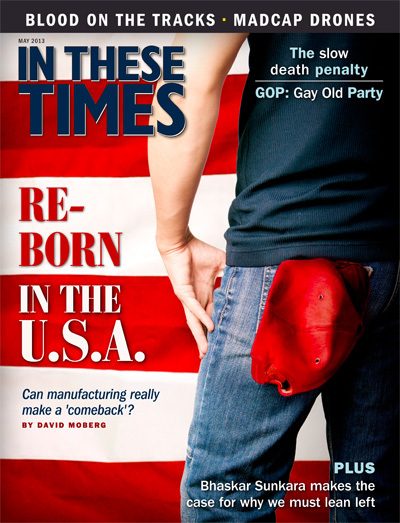Upstream Color Reinvents Cinema
We’ve seen the future of film, and it’s incomprehensible.
Michael Atkinson

I could look ahead and claim that Shane Carruth’s Upstream Color might just be the American arthouse film of the year — if in fact I could tell you with any certainty what exactly it is. There’s never quite been another film like it, which may or may not be good news to you, depending upon how satisfied or starved you feel these days by the state of our national cinema.
American movies seem to be enduring a death spiral of unoriginality and empty CGI sensationalism, due to the simple fact that films have become too expensive to make, sell and exhibit. The studios make Ice Age sequels and teen vampire sagas and giant robot fantasies because they’re forced to. Nothing else will reliably turn a profit. Francis Ford Coppola predicted this would happen, years ago, and prophesied that eventually the next advancement in the art of film would be made by a teenage girl with a video camera in her bedroom.
He was right — the salvation of the art form, at least in this country, where the industry receives no state funding to speak of, rests with the resourceful indie amateur, the wingnut renegade for whom there are no rules, because without money, what can you lose? This paradigm may be exemplified by the 2011 film For Lovers Only, which brothers Mark and Michael Polish made with a handheld digital camera and no budget whatsoever and then uploaded to iTunes, selling tens of thousands of copies and keeping every cent themselves.
Carruth is another lone wolf — he not only crafted every aspect of Upstream Color, he’s also distributing it himself. Actually, he may not have had a choice — an ex-engineer and self-taught filmmaker, Carruth is apparently dedicated to philosophical ambiguity in a way that doesn’t play, as Horatio Alger used to say, in Peoria. His first film, Primer (2004), was a head-scratching time-travel masterpiece shot on a bake sale budget but fashioned with such intricate ideas that it may not be quite decipherable, or comprehensible, to the human mind. (Exhaustive efforts at creating a timeline of the film’s hall-of-mirrors narrative are rampant online and always leave some questions unanswered.)
Upstream Color doubles down and emerges as a kind of new achievement in obliquity. What Carruth seems to have done here is reinvent movies as a delivery system for narrative mystery instead of narrative data. What we see, we see in fragments, gorgeously shot but elusive, as though we are passing in and out of consciousness. It all begins, if that’s the right word, with a grub extracted from the soil of “exotic” plants that some street kids use to get high and nurtured by an unnamed creep, who soon Tasers a woman, Kris (Amy Seimetz), forces a grub down her throat, and keeps her drugged, imprisoned and brainwashed for an indeterminate span of time. With worms under her skin, no money left and her psyche bludgeoned, she emerges to try to rebuild her life — with the help of The Sampler, a mysterious audiologist who gives her a blood transfusion from a live pig, and who seems to be everywhere and invisible, like one of Wim Wenders’ angels. Soon she meets Jeff (Carruth), who’s similarly scarred but in unexplicated ways, and the two attempt to form a relationship against seemingly cosmic odds.
Carruth’s approach is more evocative than concrete, to say the least. Poisonings arise in the form of blue flowers, grubs infest everything, patterns and menacing portents are thick on the ground. Like David Lynch’s seminal Eraserhead, the film that most often came to mind in my furious effort to somehow contextualize Upstream Color, Carruth’s film feels like a subconscious flow of fears and anxieties. But the clarity of this anxiety is bruising and stunning. In its abstracted fashion, the movie howls in pain about contemporary loneliness, the dense unknowability of modern society, the dread of industrial poisoning and the unmooring of human beings from what was once a fully natural world.
Upstream Color is only baffling, really, if we expect it to be a “movie” as we might reflexively define it. Is it something else, something purely lyrical and sensuous, like music? Maybe we should ask instead: Have we evolved sufficiently as film viewers to handle Carruth, or is he aiming ahead, at a new breed of Homo cinematicus? Or, for now, are the mysteries their own reward?









